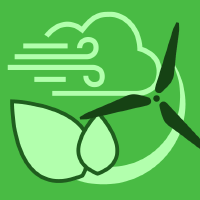Topic Menu
► Topic MenuTopic Editors



Hydrogen Technologies vs. Battery Ones in the Green Energy Transition
Topic Information
Dear Colleagues,
The transition to an economy with an exponentially reduced environmental impact is now obligatory. In this context, two major technologies can enable the exploitation and full utilisation of renewable energy sources: one operates using hydrogen and the other via batteries. These are thus two seemingly contrasting but complementary technologies. This Topic aims to present scientific articles highlighting (the list is only partial) the pros and cons of both technologies, comparing them and showing their areas of use, the social and economic aspects of their application, as well as the technological and infrastructural challenges, fundamental/key research issues, regulations, test protocols and costs. In addition, state-of-the-art analyses/reviews are also welcome. In summary, we aim to provide an overview of the two technologies in order to enable the reader to form an opinion exclusively based on the results of scientific research.
Dr. Orazio Barbera
Prof. Dr. Monica Santamaria
Dr. Vincenzo Baglio
Topic Editors
Keywords
- fuel cell
- batteries
- hydrogen technologies
- battery-based power systems
- hydrogen-based power systems
- hydrogen infrastructures
- charging infrastructures
- energy storage
- green transition
- socio-economic impact of green transition
Participating Journals
| Journal Name | Impact Factor | CiteScore | Launched Year | First Decision (median) | APC | |
|---|---|---|---|---|---|---|

Energies
|
3.0 | 6.2 | 2008 | 17.5 Days | CHF 2600 | Submit |

Sustainability
|
3.3 | 6.8 | 2009 | 20 Days | CHF 2400 | Submit |

Batteries
|
4.6 | 4.0 | 2015 | 22 Days | CHF 2700 | Submit |

Clean Technologies
|
4.0 | 6.1 | 2019 | 30 Days | CHF 1600 | Submit |

Hydrogen
|
- | 3.6 | 2020 | 15.4 Days | CHF 1000 | Submit |

MDPI Topics is cooperating with Preprints.org and has built a direct connection between MDPI journals and Preprints.org. Authors are encouraged to enjoy the benefits by posting a preprint at Preprints.org prior to publication:
- Immediately share your ideas ahead of publication and establish your research priority;
- Protect your idea from being stolen with this time-stamped preprint article;
- Enhance the exposure and impact of your research;
- Receive feedback from your peers in advance;
- Have it indexed in Web of Science (Preprint Citation Index), Google Scholar, Crossref, SHARE, PrePubMed, Scilit and Europe PMC.

